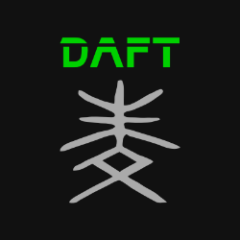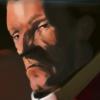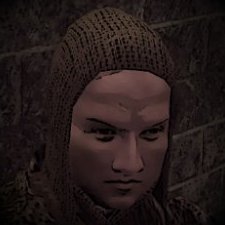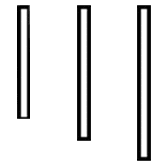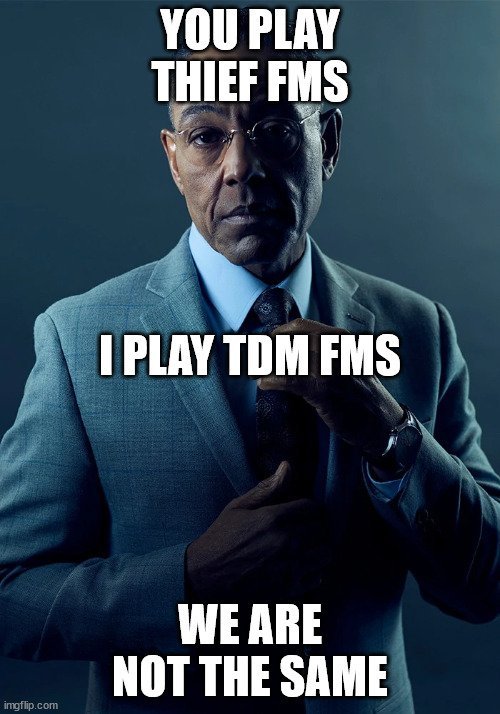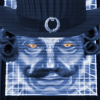Search the Community
Searched results for '/tags/forums/poor model texture alignment/' or tags 'forums/poor model texture alignment/q=/tags/forums/poor model texture alignment/&'.
-
Looking at the code, the originals were "pm_mantle_pull 750" and "pm_mantle_pullFast 450". The new "pm_mantle_pull" value is "400". A "pm_mantle_pullFast" value of "450" would be slower than regular pull, not faster. With both being set to "400", they are at least similar. Other than that, it's subjective and the feedback from playtesters was positive. Also, referenced internally here: https://forums.thedarkmod.com/index.php?/topic/22256-movementcontrols-settings-in-main-menu/&do=findComment&comment=489158
-
Hello, everyone! In this multi-part, comprehensive tutorial I will introduce you to a new light type that has been available in The Dark Mod since version 2.06, what it does, why you would want to use it and how to implement it in your Fan Missions. This tutorial is aimed at the intermediate mapper. Explanations of how to use DarkRadiant, write material files, etc. are outside of its scope. I will, however, aim to be thorough and explain the relevant concepts comprehensively. Let us begin by delineating the sections of the tutorial: Part 1 will walk you through four, distinct ways to add ambient light to a scene, the last way using irradiance environment maps (or IEMs). Lighting a scene with an IEM is considered image-based lighting. Explaining this concept is not in the scope of this tutorial; rather, we will compare and contrast our currently available methods with this new one. If you already understand the benefits IBL confers, you may consider this introductory section superfluous. Part 2 will review the current state of cubemap lights in TDM, brief you on capturing an environment cubemap inside TDM and note limitations you may run into. Three cubemap filtering applications will be introduced and reviewed. Part 3 will go into further detail of the types of inputs and outputs required by each program and give a walkthrough of the simplest way to get an irradiance map working in-game. Part 4 will guide you through two additional, different workflows of how to convert your cubemap to an irradiance map and unstitch it back to the six separate image files that the engine needs. Part 5 will conclude the tutorial with some considerations as to the scalability of the methods hitherto explained and will enumerate some good practices in creating IEMs. Typical scenes will be considered. Essential links and resources will be posted here and a succinct list of the steps and tools needed for each workflow will be summarized, for quick reference. Without further ado, let us begin. Part 1 Imagine the scene. You’ve just made a great environment for your map, you’ve got your geometry exactly how you want it… but there’s a problem. Nobody can appreciate your efforts if they can’t see anything! [Fig. 1] This will be the test scene for the rest of our tutorial — I would tell you to “get acquainted with it” but it’s rather hard to, at the moment. The Dark Mod is a game where the interplay between light and shadow is of great importance. Placing lights is designing gameplay. In this example scene, a corridor with two windows, I have decided to place 3 lights for the player to stealth his way around. Two lights from the windows streak down across the floor and a third, placeholder light for a fixture later to be added, is shining behind me, at one end of the corridor. Strictly speaking, this is sufficient for gameplay in my case. It is plainly obvious, however, that the scene looks bad, incomplete. “Gameplay” lights aside, the rest of the environment is pitch black. This is undesirable for two reasons. It looks wrong. In real life, lights bounce off surfaces and diffuse in all directions. This diffused, omni-directional lighting is called ambient lighting and its emitment can be termed irradiance. You may contrast this with directional lighting radiating from a point, which is called point lighting and its emitment — radiance. One can argue that ambient lighting sells the realism of a scene. Be that as it may, suppose we disregard scary, real-life optics and set concerns of “realism” aside… It’s bad gameplay. Being in darkness is a positive for the player avatar, but looking at darkness is a negative for the player, themselves. They need to differentiate obstacles and objects in the environment to move their avatar. Our current light level makes the scene illegible. The eye strain involved in reading the environment in these light conditions may well give your player a headache, figurative and literal, and greatly distract them from enjoying your level. This tutorial assumes you use DarkRadiant or are at least aware of idtech4’s light types. From my earlier explanation, you can see the parallels between the real life point/ambient light dichotomy and the aptly named “point” and “ambient” light types that you can use in the editor. For further review, you can consult our wiki. Seeing as how there is a danger in confusing the terms here, I will hereafter refer to real life ambient light as “irradiant light”, to differentiate it from the TDM ambient lights, which are our engine’s practical implementation of the optical phenomenon. A similar distinction between “radiant light” and point lights will be made for the same reason. Back to our problem. Knowing, now, that most all your scenes should have irradiant light in addition to radiant light, let’s try (and fail, instructionally) to fix up our gloomy corridor. [Fig. 2] The easiest and ugliest solution: ambient lights. Atdm:ambient_world is a game entity that is basically an ambient light with no falloff, modifiable by the location system. One of the first things we all do when starting a new map is putting an ambient_world in it. In the above image, the darkness problem is solved by raising the ambient light level using ambient_world (or via an info_location entity). Practically every Dark Mod mission solves its darkness problem1 like this. Entirely relying on the global ambient light, however, is far from ideal and I argue that it solves neither of our two, aforementioned problems. Ambient_world provides irradiant light and you may further modulate its color and brightness per location. However, said color and brightness are constant across the entire scene. This is neither realistic, nor does it reduce eye strain. It only makes the scene marginally more legible. Let’s abandon this uniform lighting approach and try a different solution that’s more scene-specific. [Fig. 3] Non-uniform, but has unintended consequences. Our global ambient now down to a negligible level, the next logical approach would be hand-placed ambient lights with falloff, like ambient_biground. Two are placed here, supplementing our window point lights. Combining ambient and point lights may not be standard TDM practice, but multiple idtech4 tutorials extol the virtues of this method. I, myself, have used it in King of Diamonds. For instance, in the Parkins residence, the red room with the fireplace has ambient lights coupled to both the electric light and the fire flame. They color the shadows and enrich the scene, and they get toggled alongside their parent (point) lights, whenever they change state (extinguished/relit). This is markedly better than before, but to be honest anything is, and you may notice some unintended side-effects. The AI I’ve placed in the middle of the ambient light’s volume gets omnidirectionally illuminated far more than any of the walls, by virtue of how light projection in the engine works. Moving the ambient lights’ centers closer to the windows would alleviate this, but would introduce another issue — the wall would get lit on the other side as well. Ambient lights don’t cast shadows, meaning they go through walls. You could solve this by creating custom ambient light projection textures, but at this point we are three ad hocs in and this is getting needlessly complicated. I concede that this method has limited use cases but illuminating big spaces that AI can move through, like our corridor, isn’t one of them. Let’s move on. [Fig. 4] More directional, but looks off. I have personally been using this method in my WIP maps a lot. For development (vs. release), I even recommend it. A point light instead of an ambient light is used here. The texture is either “biground1” or “defaultpointlight” (the latter here). The light does not cast shadows, and its light origin is set at one side of the corridor, illuminating it at an angle. This solves the problem of omnidirectional illumination for props or AI in the middle of the light volume, you can now see that the AI is lit from the back rather than from all sides. In addition, the point light provides that which the ambient one cannot, namely specular and normal interaction, two very important features that help our players read the environment better. This is about as good as you can get but there are still some niggling problems. The scene still looks too monochromatic and dark. From experience, I can tell you that this method looks good in certain scenes, but this is clearly not one of them. Sure, we can use two, non-shadowcasting point lights instead of one, aligned to our windows like in the previous example, we can even artfully combine local and global ambient lights to furnish the scene further, but by this point we will have multiple light entities placed, which is unwieldy to work with and possibly detrimental to performance. Another problem is that a point light’s movable light origin helps combat ambient omnidirectionality, but its projection texture still illuminates things the strongest in the middle of its volume. I have made multiple experiments with editing the Z-projection falloff texture of these lights and the results have all left me unsatisfied. It just does not look right. A final, more intellectual criticism against this method is that this does not, in a technical sense, supply irradiant light. Nothing here is diffuse, this is just radiant light pretending the best it can. [Fig. 5] The irradiance map method provides the best looking solution to imbuing your scene with an ambient glow. This is the corridor lit with irradiance map lights, a new lighting method introduced in The Dark Mod 2.06. Note the subtle gradients on the left wall and the bounced, orange light on the right column. Note the agreeable light on the AI. Comparing the previous methods and this, it is plainly obvious that an irradiance environment map looks the most realistic and defines the environment far better than any of the other solutions. Why exactly does this image look better than the others? You can inform yourself on image-based lighting and the nature of diffuse irradiance, but images speak louder than words. As you can see, the fact of the matter is that the effect, subtle as it may be, substantially improves the realism of the scene, at least compared to the methods previously available to us. Procuring irradiance environment maps for use in lighting your level will hereafter be the chief subject of this tutorial. The next part will review environment cubemap capture in TDM, the makeIrradiance keyword and three external applications that you can use to convert a TDM cubemap into an irradiance map. 1 “ Note that the color buffer is cleared to black: Doom3 world is naturally pitch black since there is no "ambient" light: In order to be visible a surface/polygon must interact. with a light. This explains why Doom3 was so dark ! “ [source] Part 2 Cubemaps are not new to The Dark Mod. The skybox materials in some of our prefabs are cubemaps, some glass and polished tile materials use cubemaps to fake reflections for cheap. Cubemap lights, however, are comparatively new. The wiki page linked earlier describes these two, new light types that were added in TDM 2.05. cubicLight is a shadow-casting light with true spherical falloff. An example of such a light can be found in the core files, “lights/cubic/tdm_lampshade_cubic”. ambientCubicLight is the light type we will be focusing on. Prior to TDM 2.06, it acted as a movable, on-demand reflection dispenser, making surfaces in its radius reflect a pre-set cubemap, much like glass. After 2.06, the old behavior was discarded and ambientCubicLight was converted to accept industry standard irradiance environment maps. Irradiance environment maps (IEMs) are what we want to make, so perhaps the first thing to make clear is that they aren’t really “handmade”. An IEM is the output of a filtering process (convolution) which requires an input in the form of a regular environment cubemap. In other words, if we want to make an IEM, we need a regular cubemap, ideally one depicting our environment — in this case, the corridor. I say a snapshot of the environment is ideal for lighting it because this emulates how irradiant light in the real world works. All radiating surfaces are recorded in our cubemap, our ambient optic array as it were, then blurred, or convoluted, to approximate light scatter and diffusion, then the in-game light “shines” this approximation of irradiant light back to the surfaces. There is a bit of a “chicken and the egg” situation here, if your scene is dark to begin with, wouldn’t you just get a dark irradiance map and accomplish nothing? In the captured cubemap faces in Fig. 6, you may notice that the environment looks different than what I’ve shown so far. I used two ambient lights to brighten up the windows for a better final irradiance result. I’ve “primed the pump”, so to speak. You can ignore this conundrum for the moment, ways to set up your scenes for better results, or priming the pump correctly, will be discussed at the end of the tutorial. Capturing the Environment The wiki has a tutorial on capturing cubemaps by angua, but it is woefully out of date. Let me run you through the process for 2.07 really briefly. To start with, I fly to approx. the center of the corridor with noclip. I then type “envshot t 256” in the console. This outputs six .tga images in the <root>/env folder, simply named “t”, sized 256x256 px and constituting the six sides of a cube and depicting the entire environment. This is how they look in the folder: [Fig. 6] The six cube faces in the folder. Of note here is that I do not need to switch to a 640x480 resolution, neither do I need to rename these files, they can already be used in an ambientCubicLight. Setting Up the Lights For brevity’s sake, I’ll skip explaining material definitions, if you’ve ever added a custom texture to your map, you know how to do this. Suffice it to say, it is much the same with custom lights. In your <root>/materials/my_cool_cubemaps.mtr file, you should have something like this: lights/ambientcube/my_test_IEM_light { ambientCubicLight { forceHighQuality //cameraCubeMap makeIrradiance(env/t) cameraCubeMap env/t colored zeroClamp } } We’ll play with the commented out line in just a bit. Firstly, let’s place the actual light in DarkRadiant. It’s as simple as creating a new light or two and setting them up in much the same way you would a regular ambient light. I select the appropriate light texture from the list, “my_test_IEM_light” in the “ambientcube” subfolder and I leave the light colored pure white. [Fig. 7] The corridor in DR, top view, with the ambient cubic lights highlighted. I can place one that fills the volume or two that stagger the effect somewhat. Remember that these lights still have a spherical falloff. Preference and experimentation will prove what looks best to you. Please note that what the material we defined does is load a cubemap while we established that ambientCubicLights only work with irradiance maps. Let’s see if this causes any problems in-game. I save the map and run it in game to see the results. If I already have TDM running, I type “reloadDecls” in the console to reload my material files and “reloadImages” to reload the .tga images in the /env folder. [Fig. 8] Well this looks completely wrong, big surprise. Wouldn’t you know it, putting a cubemap in the place of an irradiance map doesn’t quite work. Everything in the scene, especially the AI, looks to be bathed in slick oil. Even if a material doesn’t have a specular map, it won’t matter, the ambientCubicLight will produce specular reflections like this. Let’s compare how our cubemap .tga files compares with the IEM .tgas we’ll have by the end of the tutorial: [Fig. 9] t_back.tga is the back face of the environment cubemap, tIEM_back.tga is the back face of the irradiance map derived from it. As you can see, the IEM image looks very different. If I were to use “env/tIEM” instead of “env/t” in the material definition above, I would get the proper result, as seen in the last screenshot of part 1. So it is that we need a properly filtered IEM for our lights to work correctly. Speaking of that mtr def though, let’s not invoke an irradiance map we haven’t learned to convert yet. Let’s try an automatic, in-engine way to convert cubemaps to IEMs, namely the makeIrradiance material keyword. makeIrradiance and Its Limitations Let’s uncomment the sixth line in that definition and comment out the seventh. cameraCubeMap makeIrradiance(env/t) //cameraCubeMap env/t Here is a picture of how a cubemap ran through the makeIrradiance keyword looks like: [Fig. 10] Say ‘Hi’ to our friend in the back, the normalmap test cylinder. It’s a custom texture I’ve made to demonstrate cubemap interactions in a clean way. Hey now, this looks pretty nice! The scene is a bit greener than before, but you may even argue it looks more pleasing to the eyes. Unfortunately, the devil is in the details. Let’s compare the makeIrradiance keyword’s output with the custom made irradiance map setup seen at the end of part 1. [Fig. 11, 12] A closer look at the brick texture reveals that the undesired specular highlighting is still present. The normal map test cylinder confirms that the reason for this is the noisy output of the makeIrradiance keyword. The in-engine conversion is algorithmic, more specifically, it doesn't allow us to directly compare .tga files like we did above. Were we able to, however, I'm sure the makeIrradiance IEM would look grainy and rough compared to the smooth gradient of the IEM you’ll have by the end of this tutorial. The makeIrradiance keyword is good for quick testing but it won’t allow you fine control over your irradiance map. If we want the light to look proper, we need a dedicated cubemap filtering software. A Review of Cubemap Filtering Software Here I’ll introduce three programs you can produce an irradiance map with. In the coming parts, I will present you with a guide for working with each one of them. I should also note that installing all of these is trivial, so I’ll skip that instructional step when describing their workflows. I will not relay you any ad copy, as you can already read it on these programs’ websites. I’ll just list the advantages and disadvantages that concern us. Lys https://www.knaldtech.com/lys/ Advantages: Good UI, rich image manipulation options, working radiance/specular map filtering with multiple convolution algorithms. Disadvantages: $50 price tag, limited import/export options, only available on Windows 64-bit systems. cmftStudio https://github.com/dariomanesku/cmftStudio Advantages: Available on Windows, OSX and Linux, free, open source software, command line interface available. Disadvantages: Somewhat confusing UI, limited import options, missing features (radiance/specular map filtering is broken, fullscreen doesn’t work), 32-bit binaries need to be built from source (I will provide a 32-bit Windows executable at the end of the tutorial). Modified CubeMapGen https://seblagarde.wordpress.com/2012/06/10/amd-cubemapgen-for-physically-based-rendering/ Advantages: Free software, quickest to work with (clarified later). Disadvantages: Bad UI, only Windows binaries available, subpar IEM export due to bad image adjustment options. Let’s take a break at this point and come back to these programs in part 3. A lot of caveats need to be expounded on as to which of these three is the “best” software for making an irradiance map for our purposes. Neither of these programs has a discreet workflow; rather, the workflow will include or exclude certain additional programs and steps depending on which app you choose to work with. It will dovetail and be similar in all cases. Part 3 The aim of this tutorial is twofold. First, it aims to provide the most hands-free and time-efficient method of converting an envshot, environment cubemap to an IEM and getting it working in-game. The second is using as few applications as possible and keeping them all free software that is available for download, much like TDM itself. The tutorial was originally going to only cover IEM production through Lys, as that was the app I used to test the whole process with. I soon realized that it would be inconsiderate of me to suggest you buy a fifty dollar product for a single step in a process that adds comparatively little to the value of a FM, if we’re being honest (if you asked me, the community would benefit far more from a level design tutorial than a technical one like this, but hey, maybe later, I’m filling a niche right now that nobody else has filled). This led me to seek out open-source alternatives to Lys, such as Cubemapgen, which I knew of and cmftStudio, which I did not. I will preempt my own explanations and tell you right away that, in my opinion, cmftStudio is the program you should use for IEM creation. This comes with one big caveat, however, which I’m about to get into. Six Faces on a Cross and The Photoshop Problem Let’s review. Taking an envshot in-game gives you six separate images that are game-ready. Meaning, you get six, split cubemap faces as an output, you need six, split irradiance map faces as an input. This is a problem, because neither Lys nor cmftStudio accept a sequence of images as such. They need to be stitched together in a cube cross, a single image of the unwrapped cube, like this: [Fig. 13] From Lys. Our cubemap has been stitched into a cross and the “Debug Cube Map Face Position” option has been checked, showing the orientations of each face. In Lys only panoramas, sphere maps and cube maps can be loaded into the program. The first two do not concern us, the third specifically refers to a single image file. Therefore, to import a TDM envshot into Lys you need to stitch your cubemap into a cross. Furthermore, Lys’ export also outputs a cubemap cross, therefore you also need to unstitch the cubemap into its faces afterwards if you want to use it in TDM. In cmftStudio you can import single map faces! Well… no, you can’t. The readme on GitHub boasts “Input and output types: cubemap, cube cross, latlong, face list, horizontal and vertical strip.” but this is false. The UI will not allow you to select multiple files on import, rendering the “face list” input type impossible.2 Therefore, to import a TDM envshot into cmftStudio you need to stitch your cubemap into a cross. Fortunately, the “face list” export type does work! Therefore, you don’t need to unstitch the cubemap manually, cmftStudio will export individual faces for you. In both of these cases, then, you need a cubemap cross. For this tutorial I will use Adobe Photoshop, a commercial piece of software, to stitch our faces into a cubemap in an automated fashion (using Photoshop’s Actions). This is the big caveat to using cmftStudio, even if you do not want to buy Lys, PS is still a prerequisite for working with both programs. There are, of course, open source alternatives to Photoshop, such as GIMP, but it is specifically Photoshop’s Action functionality that will power these workflows. GIMP has its own Actions in the form of Macros, but they are written with python. GIMP is not a software suite that I use, neither is python a language I am proficient with. Out of deference for those who don’t have, or like working with, Photoshop, I will later go through the steps I take inside the image editor in some detail, in order for the studious reader to reconstruct them, if they so desire, in their image editing software of choice. At any rate, and at the risk of sounding a little presumptuous, I take it that, as creative types, most of you already have Photoshop on your computers. 2 An asterisk regarding the “impossibility” of this. cmftStudio is a GUI for cmft, a command line interface that does the same stuff but inside a command prompt. I need to stress that I am certain multiple faces can be inputted in the command line, but messing with unwieldy prompts or writing batch files is neither time-saving nor user-friendly. This tutorial is aimed at the average mapper, but a coder might find the versatility offered in cmft interesting. The Cubemapgen Workflow You will have noticed that I purposefully omitted Cubemapgen from the previous discussion. This is because working with Cubemapgen, wonderfully, does not need Photoshop to be involved! Cubemapgen both accepts individual cubemap faces as input and exports individual irradiance map faces as output. Why, then, did I even waste your time with all the talk of Lys, cmftStudio and Photoshop? Well, woefully, Cubemapgen’s irradiance maps look poor at worst and inconsistent at best. Comparing IEMs exported from Lys and cmftStudio, you will see that both look practically the same, which is good! An IEM exported from Cubemapgen, by default, is far too desaturated and the confusing UI does not help in bringing it to parity with the other two programs. If you work solely with Cubemapgen, you won’t even know what ‘parity’ is, since you won’t have a standard to compare to. [Fig. 14] A comparison between the same irradiance map face, exported with the different apps at their respective, default settings. Brightened and enlarged for legibility. This may not bother you and I concede that it is a small price to pay for those not interested in working with Photoshop. The Cubemapgen workflow is so easy to describe that I will in fact do just that, now. After I do so, however, I will argue that it flies in the face of one of the aims of this tutorial, namely: efficiency. Step 1: Load the cubemap faces into Cubemapgen. Returning to specifics, you will remember that we have, at the moment, six .tga cubemap faces in a folder that we want to convert to six irradiance map faces. With Cubemapgen open, direct your attention to these buttons: [Fig. 15] You can load a cubemap face by pressing the corresponding button or using the hotkey ‘F’. To ensure the image faces the correct way, you must load it in the corresponding “slot”, from the Select Cubemap Face dropdown menu above, or by pressing the 1-6 number keys on your keyboard. Here is a helpful list: X+ Face <1> corresponds to *_right X- Face <2> corresponds to *_left Y+ Face <3> corresponds to *_up Y- Face <4> corresponds to *_down Z+ Face <5> corresponds to *_forward Z- Face <6> corresponds to *_back ...with the asterisk representing the name of your cubemap. With enough practice, you can get quite proficient in loading cubemap faces using keyboard shortcuts. Note that the ‘Skybox’ option in the blue panel is checked, I recommend you use it. Step 2: Generate the Irradiance Map [Fig. 16] The corridor environment cubemap loaded in and filtered to an irradiance map. The options on the right are my attempt to get the IEM to look right, though they are by no means prescriptive. Generating an IEM with Modified CubeMapGen 1.66 is as easy as checking the ‘Irradiance cubemap’ checkbox and hitting ‘Filter Cubemap’ in the red panel. There are numerous other options there, but most will have no effect with the checkbox on. For more information, consult the Sébastien Lagarde blog post that you got the app from. I leave it to you to experiment with the input and output gamma sliders, you really have no set standard on how your irradiance map is supposed to look, so unfortunately you’ll have to eyeball it and rely on trial and error. Two things are important to note. The ‘Output Cube Size’ box in the red panel is the resolution that you want your IEM to export to. In the yellow panel, make sure you set the output as RGB rather than RGBA! We don’t need alpha channels in our images. Step 3: Export Irradiance Map Faces Back in the green panel, click the ‘Save CubeMap to Images’ button. Save the images as .tga with a descriptive name. [Fig. 17] The exported irradiance map faces in the folder. These files still need to be renamed with appropriate suffixes in order to constitute a readable cubemap for the engine. The nomenclature is the same as the table above: “c00” is the X+ Face, to be renamed “right”, “c01” is the X- Face and so on. Right left, up down, forward and back. That’s the order! This is all there is to this workflow. A “cameraCubeMap env/testshot” in the light material will give us a result that will look, at the very least, better than the inbuilt makeIrradiance material keyword. [Fig. 17] The map ended up being a little bright. Feel free to open Fig. 4 and this in seperate tabs and compare the Lys/cmft export with the cubemapgen one. A Review of the Workflow Time for the promised criticism to this workflow. I already stated my distaste for the lack of a standardised set of filtering values with this method. The lack of any kind of preset system for saving the values you like makes working with Cubemapgen even more slipshod. Additionally, in part 2, I said that Cubemapgen is the fastest to work with, but this needs to be qualified. What we just did was convert one cubemap to an irradiance map, but a typical game level ought to use more than a single IEM. Premeditation and capturing fake, “generic” environment cubemaps (e.g. setting up a “blue light on the right, orange on the left” room or a “bright skylight above, brown floor” room, then capturing them with envshot) might allow for some judicious reuse and keep your distinct IEM light definition count down to single digits, but you can only go so far with that. I am not arguing here for an ambient cubic light in every scene either, certainly only those that you deem need the extra attention, or those for which the regular lighting methods enumerated in Part 1 do not quite work. I do tentatively assume, though, that for an average level you would use between one and two dozen distinct IEMs. Keep in mind that commercial games, with their automated probe systems for capturing environment shots, use many, many more than that. With about 20 cubemaps to be converted and 6 faces each to load into Cubemapgen, you’ll be going through the same motions 120 whole times (saving and renaming not included). If you decide to do this in one sitting (and you should, as Cubemapgen, to reiterate, does not keep settings between sessions), you are in for a very tedious process that, while effective, is not very efficient. The simple fact is that loading six things one by one is just slower than loading a single thing once! The “single thing” I’m referring to is, of course, the single, stitched cubemap cross texture. In the next part, I will go into detail regarding how to make a cubemap cross in Photoshop in preparation for cmftStudio and Lys. It will initially seem a far more time-consuming process to you than the Cubemapgen workflow, but through the magic of automation and the Actions feature, you will be able to accomplish the cubemap stitch process in as little as a drag-and-drop into PS and a single click. The best thing is that after we go through the steps, you won’t have to recreate them yourself, as I will provide you with a custom Actions .atn file and save you the effort. I advise you not to skip the explanations, however. The keen-eyed among you may have noticed that you can also load a cube cross in Cubemapgen. If you want to use both Cubemapgen and Photoshop together to automate your Cubemapgen workflow, be aware that Cubemap gen takes crosses that have a different orientation than the ones Lys and cmftStudio use. My macros (actions) are designed for the latter, so if you want to adjust them for Cubemapgen you would do well to study my steps and modify them appropriately. For the moment, you’ve been given the barebones essentials needed to capture an envshot, convert it to an irradiance map and put it in your level at an appropriate location, all without needing a single piece of proprietary software. You can stop here and start cranking out irradiance maps to your heart’s content, but if you’re in the mood for some more serious automation, consider the next section.
-
There's a group of players who have meticulously tested and adjusted ghosting rules for The Dark Mod. Please see: Official Ghosting Rules: https://www.ttlg.com/forums/showthread.php?t=148523 Ghost Rules Discussion: https://www.ttlg.com/forums/showthread.php?t=148487 Why alienate an established group of dedicated players?
-
That sort of tone doesn't fly in our forums.
-
Following on from Springheel's thread for Poor textures I figured we should have thread for models, so what do we mean buy poor models, if we use the model below as an example - models/darkmod/fireplace/fireplace_wooden.ase Whats needs fixing - mis-aligned textures - on the model above you can see on the front of the mantle face where the brick textures isn't aligned.mis-scaled textures - the brick textures are blurred up close - which us highlighed by a patch I placed at the back of the firebox to cover part of the wall-model poking through.The poor texture on the upper mantle face - that even in direct light is very dark and show little detail.Whats not to do - change the dimensions - as this may break existing maps that have used that model.radically change textures - for the same reason as above, but if unsure ask the team.remove hidden/internal shadow mesh - as this directly effect model performance with lit, but if the shadow mesh is poor, ask the team.
- 39 replies
-
- bad model textures
- poor model texture alignment
- (and 1 more)
-
Ambient atmospheres are in my opinion one of the best parts of the Dark Mod experience, not just for getting a mission to have the right feel but also for inspiration and to have them playing in the background when creating maps. The more the merrier, so here's a thread to collect all the links to ambient music and environmental sounds that could have a spot in TDM's setting. Ambients from the TDM forums Gast's Eerie Lullabies Magnanimous Merry's Miscellanea Orbweaver's Dark Ambients Spadey's Ambients Radioteque's Ambients Kyyrma's Composing Ambient Tracks for Dummies - Kyyrma shows how ambient soundtracks can be made from a set of sounds. Also contains some of his finished ambients. Request for more interior sounds - this thread is a very productive community session where members came up with a large and good selection of new ambients. Uncle Peti's Sound Den Dragofer's Ambients - post #6 in this thread SeriousToni's Ambients - posts #8, 12, 15 and 19 in this thread Ambients from the TTLG forums Custom resources list Gigagooga's Ambients 1 - possibly the largest pack of ambient musics and nature sounds, all of them high quality. Gigagooga's Ambients 2 - this pack puts more weight on shorter swells/hits/pads to be layered on top of a subtle ambient. Gigagooga's Ambients 3 Yandros' ambient loop Sephy's Ambients - a large collection of ambient pieces, including many shorter ones which will be valuable for anyone wanting to try a layered ambience approach like in the Thief OMs and Full Moon Fever. Internet databases www.freesound.org - some of the better composers in my opinion are ERH and BrandonNyte. www.purple-planet.com - a large selection of all kinds of ambient and musical soundtracks to be used freely. www.darkwinter.com - an internet label that publishes a lot of dark ambient music under a Creative Commons license. www.endlessascent.com - sister website of Darkwinter for non-dark ambients. Youtube Asatru Dark - also has very nice reference images for outdoor stone memorials, statue arrangements etc. #4 Void by Raffaele du Marteau & #6 Dreaming of Nowhere by Raffaele du Marteau - possibly the most forlorn pieces I've found on the internet. Alacazam - a prolific Creative Commons ambients composer . Cryo Chamber - for-profit label for dark ambient music with a large selection on offer. Going by their Youtube comments they're fine with people using their soundtracks for games etc., although you'd probably need to buy the soundtracks first. Dark Ambient Mixed Session - as much ambient as something to have in the background while mapping.
-
Thanks for the replies. I followed Sir Taffsalot's instrunctions. Dmap seems fine, but after running the map with the "map" command, the map loads forever. But after alt tabbing back to windows doom 3 minimizes and gives me a log window. It seems that this is the last contest: loaded collision model models/darkmod/lights/non-extinguishable/streetlamps/roundstreetlamp_02.lwo loaded collision model models/darkmod/lights/extinguishable/chandelier1.lwo loaded collision model models/darkmod/lights/extinguishable/chandelier_6candles.lwo loaded collision model models/darkmod/lights/non-extinguishable/wallight_outdoor3.lwo loaded collision model models/darkmod/lights/non-extinguishable/wallight2.lwo loaded collision model models/darkmod/door_related/lock_iron.lwo loaded collision model models/darkmod/door_related/handle_curved_rotate_2.ase loaded collision model models/darkmod/door_related/handle_curved_rotate.ase loaded collision model models/darkmod/lights/non-extinguishable/squarehanginglamp.lwo loaded collision model models/darkmod/mechanical/switches/switch_rotate_backplate.ase loaded collision model models/darkmod/mechanical/switches/switch_rotate_lever.ase loaded collision model models/darkmod/door_related/key_fancy02.ase loaded collision model models/darkmod/misc/clipmodels/armchair1_cm.lwo loaded collision model models/darkmod/furniture/tables/coffeetable1.lwo loaded collision model models/darkmod/lights/extinguishable/candle_holder_empty.lwo loaded collision model models/darkmod/lights/extinguishable/candle_short.lwo loaded collision model models/darkmod/decorative/wall/longbanner_wide.lwo loaded collision model models/darkmod/lights/extinguishable/wall_oil_lamp02.lwo loaded collision model models/darkmod/lights/non-extinguishable/lamp_wall_electric_01.ase loaded collision model models/darkmod/architecture/chimneys/chimney_left.lwo loaded collision model models/darkmod/lights/non-extinguishable/hanging_lantern.lwo loaded collision model models/darkmod/decorative/statues/statue_lion_mini.ase loaded collision model models/darkmod/mechanical/gears/gear_small.lwo loaded collision model models/darkmod/graveyard/grave_simple_1.lwo loaded collision model models/darkmod/graveyard/grave_wall_1.lwo loaded collision model models/darkmod/nature/trees/tree_dm02.lwo loaded collision model models/darkmod/nature/flowers/lily_tall.ase loaded collision model models/darkmod/nature/flowers/lily_small.ase loaded collision model models/darkmod/mechanical/watermill_wheel.ase loaded collision model models/darkmod/furniture/beds/4posterbed.lwo loaded collision model models/darkmod/furniture/tables/endtable_set01.lwo loaded collision model models/darkmod/lights/extinguishable/candle_default.lwo loaded collision model models/darkmod/containers/openable/chest_metal_lid.ase loaded collision model models/darkmod/containers/openable/chest_metal.ase loaded collision model models/darkmod/decorative/signs/signpost_single_old.lwo loaded collision model models/darkmod/lights/non-extinguishable/wallight1.lwo loaded collision model models/darkmod/furniture/shelves/winerack.ase loaded collision model models/darkmod/containers/barrel01.lwo loaded collision model models/darkmod/containers/crate01.lwo loaded collision model models/darkmod/containers/keg_tapped.lwo loaded collision model models/darkmod/lights/extinguishable/candle_holder_round.lwo loaded collision model models/darkmod/kitchen/goblet2.lwo loaded collision model models/darkmod/kitchen/cup01.lwo loaded collision model models/darkmod/lights/non-extinguishable/lamp_shaded.lwo loaded collision model models/darkmod/furniture/beds/mattress_straw.lwo loaded collision model models/darkmod/mechanical/gears/gear_small_hollow_2_spoke.lwo loaded collision model models/darkmod/mechanical/machine_01_medium.ase loaded collision model models/darkmod/mechanical/smokestack_tall_wall.ase loaded collision model models/darkmod/mechanical/pipes/steam_pipe02_bend2.lwo removed 2 degenerate triangles loaded collision model models/darkmod/mechanical/gauges/gauge_needle_square.ase loaded collision model models/darkmod/mechanical/gear_clock_hand_2_long.lwo loaded collision model models/darkmod/mechanical/gear_clock_hand_1_long.lwo loaded collision model models/darkmod/mechanical/switches/switch_flip_backplate.ase loaded collision model models/darkmod/mechanical/switches/switch_flip.ase loaded collision model models/darkmod/nature/mushrooms_02.lwo loaded collision model models/darkmod/door_related/lockbox_02.ase loaded collision model models/darkmod/nature/mushroom_03.lwo loaded collision model models/darkmod/decorative/games/gamepiece_carved01.lwo loaded collision model models/darkmod/dungeon/chain_highpoly_long.lwo loaded collision model models/darkmod/dungeon/chain_highpoly.lwo loaded collision model models/darkmod/decorative/statues/bust_01_male.ase loaded collision model models/darkmod/decorative/statues/bust_02_female.ase loaded collision model models/darkmod/fireplace/grate.lwo loaded collision model models/darkmod/fireplace/burntwood.lwo loaded collision model models/darkmod/furniture/cabinet1.lwo loaded collision model models/darkmod/lights/non-extinguishable/electric_wall_fancy.lwo loaded collision model models/darkmod/furniture/cabinet_set01_open.lwo loaded collision model models/darkmod/furniture/cabinet_set01_leftdoor.lwo loaded collision model models/darkmod/furniture/cabinet_set01_rightdoor.lwo loaded collision model models/darkmod/furniture/desk1.lwo loaded collision model models/darkmod/misc/ink_pot01_corked.lwo loaded collision model models/darkmod/furniture/desk_flip_set01.lwo loaded collision model models/darkmod/furniture/desk_flip_set01_door.lwo loaded collision model models/darkmod/furniture/wardrobe.lwo loaded collision model models/darkmod/furniture/beds/bed_single_timber.ase loaded collision model models/darkmod/containers/openable/footlocker_wood_lid.ase loaded collision model models/darkmod/containers/openable/footlocker_wood.ase loaded collision model models/darkmod/lights/non-extinguishable/simple_square1_unattached.lwo loaded collision model models/darkmod/furniture/beds/doublebed_simple.lwo loaded collision model models/darkmod/furniture/commode.lwo loaded collision model models/darkmod/misc/clipmodels/stool_padded_cm.lwo loaded collision model models/darkmod/misc/clipmodels/barrel01_cm.lwo loaded collision model models/darkmod/misc/clipmodels/pot_large_cm.ase loaded collision model models/darkmod/misc/clipmodels/pot_small_cm.ase loaded collision model models/darkmod/misc/clipmodels/pot_medium_cm.ase loaded collision model models/darkmod/decorative/hourglass.ase loaded collision model models/darkmod/decorative/vases/vase2_mini.ase loaded collision model models/darkmod/mechanical/gears/gear_small_hollow_5_spoke.lwo loaded collision model models/darkmod/mechanical/gears/gear.lwo loaded collision model models/darkmod/mechanical/gears/gear_hollow_3_spoke.lwo loaded collision model models/darkmod/mechanical/generator1.lwo loaded collision model models/darkmod/mechanical/furnace_opengrill.lwo loaded collision model models/darkmod/mechanical/pipes/tap1.lwo loaded collision model models/darkmod/waterworks/waterpump.ase loaded collision model models/darkmod/containers/bucket.lwo loaded collision model models/darkmod/loot/purse_gems.ase loaded collision model models/darkmod/loot/diamond_large_2.ase loaded collision model models/darkmod/furniture/beds/singlebed1.lwo loaded collision model models/darkmod/door_related/key_simple_01.ase loaded collision model models/darkmod/misc/clipmodels/wchair1_cm.lwo loaded collision model models/darkmod/lights/non-extinguishable/round_lantern_unattached.lwo removed 58 degenerate triangles loaded collision model models/darkmod/readables/book_t1.lwo loaded collision model models/darkmod/misc/clipmodels/basket_cm.lwo loaded collision model models/darkmod/mechanical/switches/switch_translate_backplate.ase loaded collision model models/darkmod/mechanical/switches/switch_translate_lever.ase loaded collision model models/darkmod/mechanical/furnace_small_round.lwo loaded collision model models/darkmod/mechanical/pipes/furnace_angle_curved.lwo loaded collision model models/darkmod/mechanical/pipes/furnace_pipe02_straight.lwo loaded collision model models/darkmod/furniture/shelves/shelf_standing_small.lwo loaded collision model models/darkmod/misc/clipmodels/cookpot_cm.lwo loaded collision model models/darkmod/kitchen/creamer_silver.ase loaded collision model models/darkmod/kitchen/sugar_silver.ase loaded collision model models/darkmod/kitchen/tea_pot_silver.ase loaded collision model models/darkmod/misc/clipmodels/pot_stove01_cm.lwo loaded collision model models/darkmod/misc/clipmodels/cup01_cm.lwo loaded collision model models/darkmod/misc/clipmodels/bowl01_small_cm.lwo loaded collision model models/darkmod/lights/extinguishable/standing_oil_lamp.lwo loaded collision model models/darkmod/kitchen/serving_dish_covered.lwo loaded collision model models/darkmod/kitchen/plate_serving.lwo loaded collision model models/darkmod/furniture/tables/dining_table_huge1.lwo loaded collision model models/darkmod/misc/clipmodels/dchair2_cm.lwo loaded collision model models/darkmod/furniture/seating/throne_simple.lwo loaded collision model models/darkmod/lights/extinguishable/candlestick2_empty.lwo loaded collision model models/darkmod/tools/household/broom_01.ase loaded collision model models/darkmod/tools/household/brush.lwo loaded collision model models/darkmod/tools/household/wash_bin.ase loaded collision model models/darkmod/kitchen/chamberpot.lwo loaded collision model models/darkmod/lights/extinguishable/torch_gothic02_mounted.lwo loaded collision model models/darkmod/lights/non-extinguishable/grill_light.lwo loaded collision model models/darkmod/waterworks/bathtub01.lwo loaded collision model models/darkmod/waterworks/faucet_simple.lwo loaded collision model models/darkmod/furniture/tables/endtable1.lwo loaded collision model models/darkmod/decorative/personal_items/brush_hand.ase loaded collision model models/darkmod/decorative/personal_items/mirror_hand.ase loaded collision model models/darkmod/furniture/seating/sofa1.lwo loaded collision model models/darkmod/furniture/seating/armchair1.lwo loaded collision model models/darkmod/misc/strawbale_large01.lwo loaded collision model models/darkmod/misc/straw_pile01.lwo loaded collision model models/darkmod/misc/rope_coil01.lwo loaded collision model models/darkmod/containers/sack1.lwo loaded collision model models/darkmod/nature/large_bush01.lwo loaded collision model models/darkmod/weapons/blackjack.lwo loaded collision model models/darkmod/weapons/longswordlow.lwo loaded collision model models/darkmod/weapons/shortsword.lwo loaded collision model models/darkmod/player_equipment/compass_open.lwo loaded collision model models/darkmod/lights/non-extinguishable/hooded_lantern.lwo loaded collision model models/darkmod/player_equipment/spyglass_closed.lwo loaded collision model models/darkmod/player_equipment/lockpick_snake.lwo loaded collision model models/darkmod/player_equipment/lockpick_triangle.lwo loaded collision model models/darkmod/containers/package_large.lwo loaded collision model models/darkmod/lights/extinguishable/cagelamp.lwo loaded collision model models/darkmod/containers/crate02.lwo loaded collision model models/darkmod/containers/barrell_med_closed.lwo loaded collision model models/darkmod/containers/package_small.lwo loaded collision model models/darkmod/kitchen/bottle01.lwo loaded collision model models/darkmod/decorative/statues/statue_noblewoman01.lwo loaded collision model models/darkmod/lights/extinguishable/candle_01.ase loaded collision model models/darkmod/lights/extinguishable/candle_01_stub.ase loaded collision model models/darkmod/lights/extinguishable/candle_wide.lwo loaded collision model models/darkmod/lights/extinguishable/candle_wide_stub.ase loaded collision model models/darkmod/nature/flowers/flowers_patch_01.ase loaded collision model models/darkmod/containers/package_flat.lwo loaded collision model models/darkmod/junk/cartwheel.lwo loaded collision model models/darkmod/junk/apple_core.lwo loaded collision model models/darkmod/nature/plant_05.ase loaded collision model models/darkmod/nature/trees/pine_12.ase loaded collision model models/darkmod/nature/trees/tree_dm.lwo loaded collision model models/darkmod/nature/trees/tree_dm01.lwo loaded collision model models/darkmod/nature/trees/pine_20.ase loaded collision model models/darkmod/nature/bush_large02.lwo loaded collision model models/darkmod/nature/bush_small02.lwo loaded collision model models/darkmod/nature/mushroom_01.lwo loaded collision model models/darkmod/nature/mushrooms_01.lwo loaded collision model models/darkmod/mechanical/gears/watermill_cogwheel_big.ase loaded collision model models/darkmod/mechanical/watermill_pole.ase loaded collision model models/darkmod/mechanical/pipes/steam_pipe02_bend.lwo loaded collision model models/darkmod/mechanical/pully_wheel_small.lwo loaded collision model models/darkmod/mechanical/windlass.lwo loaded collision model models/darkmod/junk/plank_longer.ase loaded collision model models/darkmod/tools/pickaxe.lwo loaded collision model models/darkmod/tools/spade_square.lwo loaded collision model models/darkmod/furniture/beds/straw_pile_bed.lwo loaded collision model models/darkmod/decorative/vases/cup_marble.ase loaded collision model models/darkmod/weapons/ropearrow.lwo loaded collision model models/darkmod/loot/jewellery/ring_gold_bc01.ase loaded collision model models/darkmod/misc/clipmodels/broadbrim_hat_cm.lwo loaded collision model models/darkmod/kitchen/plate_s.lwo loaded collision model models/darkmod/nature/mushroom_02.lwo loaded collision model models/darkmod/furniture/seating/bench_wooden01.lwo loaded collision model models/darkmod/weapons/longbow.lwo loaded collision model models/darkmod/wearables/quiver_full.lwo loaded collision model models/darkmod/weapons/broadhead.lwo loaded collision model models/darkmod/wearables/headgear/helmet_round02_wearable.lwo loaded collision model models/darkmod/misc/clipmodels/orchid_cm.lwo loaded collision model models/darkmod/kitchen/utensils/smspoon_ornamental.lwo loaded collision model models/darkmod/kitchen/utensils/knife_ornamental.lwo loaded collision model models/darkmod/kitchen/cookpot.lwo loaded collision model models/darkmod/kitchen/food/pear.lwo loaded collision model models/darkmod/kitchen/food/turnip.ase loaded collision model models/darkmod/kitchen/food/apple.lwo loaded collision model models/darkmod/furniture/shelves/shelf_standing_simple.lwo loaded collision model models/darkmod/wearables/headgear/proguard_helmet_wearable.lwo loaded collision model models/darkmod/furniture/shelves/bookshelf_tall_empty.lwo loaded collision model models/darkmod/furniture/clock_wall.lwo loaded collision model models/darkmod/decorative/wall/shields/shield_and_swords02.lwo loaded collision model models/darkmod/decorative/wall/antlers.lwo loaded collision model models/darkmod/containers/crate03.lwo removed 6 degenerate triangles loaded collision model models/darkmod/decorative/wall/boarhead_open.lwo loaded collision model models/darkmod/decorative/wall/mounted_head_wolf.lwo loaded collision model models/darkmod/furniture/shelves/weapon_rack01.lwo loaded collision model models/darkmod/weapons/battleaxe.lwo loaded collision model models/darkmod/decorative/wall/painting01.lwo loaded collision model models/darkmod/misc/ink&quill.lwo loaded collision model models/darkmod/readables/paper1.lwo loaded collision model models/darkmod/furniture/tables/endtable_round01.lwo loaded collision model models/darkmod/furniture/seating/stool_rectangle_rough.lwo loaded collision model models/darkmod/furniture/dresser02.lwo loaded collision model models/darkmod/furniture/tables/ornate_table01_small.lwo loaded collision model models/darkmod/architecture/doors/door_boarded_up01.lwo loaded collision model models/darkmod/misc/clipmodels/goblet2_cm.lwo loaded collision model models/darkmod/kitchen/utensils/fork_ornamental.lwo loaded collision model models/darkmod/kitchen/bottle02.lwo removed 12 degenerate triangles loaded collision model models/darkmod/weapons/mossarrow.lwo loaded collision model models/darkmod/weapons/noisemaker.lwo loaded collision model models/darkmod/weapons/waterarrow.lwo castle_streets_scroll: Fixing inv_category from Maps to #str_02390. loaded collision model models/darkmod/readables/scroll_tied_up.lwo loaded collision model models/darkmod/loot/coins/coinsb.lwo loaded collision model models/darkmod/loot/coins/gold_coin.lwo loaded collision model models/darkmod/loot/bowl_small.lwo loaded collision model models/darkmod/decorative/vases/urn01_lid.ase loaded collision model models/darkmod/decorative/vases/urn01.ase loaded collision model models/darkmod/loot/coins/purse_p_goldspilt.lwo loaded collision model models/darkmod/wearables/headgear/nobleman_hat_r.lwo WARNING: entity 'atdm_ai_nobleman02_armed_1' doesn't have health set castle_1stfloor_scroll: Fixing inv_category from Maps to #str_02390. castle_2ndfloor_scroll: Fixing inv_category from Maps to #str_02390. removed 16 degenerate triangles loaded collision model models/darkmod/loot/candlestick_round_ornate.lwo loaded collision model models/darkmod/loot/jewellery/bracelet_jewelled.lwo loaded collision model models/darkmod/loot/plate_g.lwo loaded collision model models/darkmod/loot/scepter.ase loaded collision model models/darkmod/loot/trophy01.ase loaded collision model models/darkmod/loot/amethyst.ase loaded collision model models/darkmod/misc/clipmodels/woolen_cap_cm.lwo loaded collision model models/darkmod/decorative/games/backgammon.lwo loaded collision model models/darkmod/decorative/games/dice.ase loaded collision model models/darkmod/misc/clipmodels/empty_flowerpot_cm.lwo loaded collision model models/darkmod/kitchen/food/cheese_wedge.lwo removed 22 degenerate triangles loaded collision model models/darkmod/loot/jewellery/ring_gem_skull.ase loaded collision model models/darkmod/wearables/headgear/hat_straw.lwo loaded collision model models/darkmod/loot/bottle03.lwo removed 16 degenerate triangles loaded collision model models/darkmod/loot/chalice.lwo loaded collision model models/darkmod/misc/clipmodels/beer_stein02_open_cm.lwo loaded collision model models/darkmod/kitchen/bowl01.lwo loaded collision model models/darkmod/dungeon/chain_straight_med.lwo loaded collision model models/darkmod/player_equipment/health_potion.lwo loaded collision model models/darkmod/wearables/belt_buckle.lwo loaded collision model models/darkmod/weapons/mace.lwo loaded collision model models/darkmod/player_equipment/small_rock.lwo loaded collision model models/darkmod/readables/scroll_tied_up_large.lwo loaded collision model models/darkmod/weapons/gasarrow.lwo loaded collision model models/darkmod/kitchen/food/bread_loaf01.lwo loaded collision model models/darkmod/kitchen/food/cheese_wheel.lwo loaded collision model models/darkmod/containers/package_cube.lwo loaded collision model models/darkmod/containers/package_medium.lwo loaded collision model models/darkmod/kitchen/utensils/knife_butcher.ase loaded collision model models/darkmod/kitchen/utensils/knife_chef.ase loaded collision model models/darkmod/kitchen/utensils/spoon_wooden.lwo loaded collision model models/darkmod/misc/clipmodels/pitcher01_cm.lwo loaded collision model models/darkmod/mechanical/receiver_antenna.lwo loaded collision model models/darkmod/loot/coins/coinsc.lwo loaded collision model models/darkmod/furniture/tables/rtable1.lwo loaded collision model models/darkmod/lights/non-extinguishable/lamp_desk_01.ase ...2802 entities spawned, 26 inhibited ==== Processing events ==== Objective 1: Parsing success and failure logic Objective 2: Parsing success and failure logic Objective 3: Parsing success and failure logic Objective 4: Parsing success and failure logic Objective 5: Parsing success and failure logic Objective 6: Parsing success and failure logic Objective 7: Parsing success and failure logic Objective 8: Parsing success and failure logic Objective 9: Parsing success and failure logic Objective 10: Parsing success and failure logic Objective 11: Parsing success and failure logic Applied 0 objective conditions.[aas32]: Assigned 1 multistatemover positions to AAS areas and ignored 1. WARNING: Unknown string id #str_02618 WARNING: Unknown string id #str_02619 WARNING: Unknown string id #str_02048 WARNING: Unknown string id #str_02497 WARNING: Unknown string id #str_04240 WARNING: Unknown string id #str_04240 -------------------------------------- SpawnPlayer: 0 removed 16 degenerate triangles removed 16 degenerate triangles removed 48 degenerate triangles removed 8 degenerate triangles removed 48 degenerate triangles removed 8 degenerate triangles glprogs/cookMath_pass1.vfp glprogs/cookMath_pass1.vfp glprogs/cookMath_pass2.vfp glprogs/cookMath_pass2.vfp glprogs/brightPass_opt.vfp glprogs/brightPass_opt.vfp glprogs/blurx.vfp glprogs/blurx.vfp glprogs/blury.vfp glprogs/blury.vfp glprogs/finalScenePass_opt.vfp glprogs/finalScenePass_opt.vfp ----- idRenderModelManagerLocal::EndLevelLoad ----- 0 models purged from previous level, 1170 models kept. --------------------------------------------------- ----- idImageManager::EndLevelLoad ----- WARNING: Couldn't load image: - WARNING: Couldn't load image: extinguishable/streetlamps/roundstreetlamp WARNING: Couldn't load image: extinguishable/streetlamps/roundstreetlamp_02 WARNING: Couldn't load image: extinguishable/round_lantern_sitting WARNING: Couldn't load image: extinguishable/round_lantern_unattached WARNING: Couldn't load image: extinguishable/lantern_oil_hand02 WARNING: Couldn't load image: extinguishable/simple_square1_unattached WARNING: Couldn't load image: extinguishable/simple_square1_hanging WARNING: Couldn't load image: extinguishable/simple_square2_unattached WARNING: Couldn't load image: extinguishable/wallight2 WARNING: Couldn't load image: extinguishable/wallight_3_unnatached WARNING: Couldn't load image: extinguishable/wallight_outdoor3 WARNING: Couldn't load image: extinguishable/grill_light Cooked Data will be updated after 1 frames immediately after r_postprocess is enabled. 0 0 1920 1080 Regenerated world, staticAllocCount = 0. --------- Game Map Shutdown ---------- WARNING: Door guesttohallsroof is not within a valid AAS area WARNING: Door duffordsgoldenboxlid is not within a valid AAS area WARNING: Door third_clue_hatch is not within a valid AAS area WARNING: Door wall_door_one is not within a valid AAS area WARNING: Door MetalChestLid_1 is not within a valid AAS area WARNING: Door small_gear_drawer is not within a valid AAS area WARNING: Door lowerdoor2fakecellar is not within a valid AAS area WARNING: Door secret_dufford_door is not within a valid AAS area WARNING: Door ancient_hidden_door is not within a valid AAS area WARNING: Door invisible_door is not within a valid AAS area WARNING: Door FootlockerLid_11 is not within a valid AAS area WARNING: Door fake_wall_block3 is not within a valid AAS area ModelGenerator memory: No LOD entries. -------------------------------------- Shutting down sound hardware idRenderSystem::Shutdown() Shutting down OpenGL subsystem ...wglMakeCurrent( NULL, NULL ): success ...deleting GL context: success ...releasing DC: success ...destroying window ...shutting down QGL ...unloading OpenGL DLL ------------ Game Shutdown ----------- --------- Game Map Shutdown ---------- ModelGenerator memory: No LOD entries. -------------------------------------- ModelGenerator memory: No LOD entries. I18N: Current language: german I18N: Move articles to back: Yes Main idLangDict: 128 KB in 1141 entries. Reverse dict : 46 KB in 512 keys, 431 KB in 6998 values. Articles dict : 46 KB in 512 keys, 431 KB in 6998 values. Remapped chars : 0 I18N: Shutdown. Shutdown event system -------------------------------------- malloc failure for 4194312 EDIT: Or maybe there was a error during dmap, because the dates of the dufford files seems unchanged. But how I can see if DMAP was successful?
-
I have a map, with a stone texture. I want to replace it with a new texture I made. However, there's 4,430 faces with this texture. I can use the find and replace to swap the textures, however, now the scale is wrong. How can I select all faces with the same texture? EDIT: Solved, check solution on next post
-
All I want to do is import a basic, static model into the editor. The model is in .lwo format, the polygons are all triangles, the UV's are all mapped correctly. I am not a modelling noob. The textures are all square, and in .dds format. The model does not need a collision mesh or a shadow mesh. It is just a small teddy bear. The problem is that I do not know how to associate a material with this custom model in DR. And in the wiki, which is so out of date now, there is a page that specifically deals with this issue but the example images do not load! Does anyone have the example images from this page? https://wiki.thedarkmod.com/index.php?title=Model/Texture_Guidelines Because I see that I need the path info for the model textures to be embedded in the .lwo mesh file, but the example of the path I'm supposed to use does not load in the wiki. Or maybe someone could please just give me a short description of how to import custom models into DR? I am an experienced modeler and texture artist, so no need to ELI5, it's just associating the custom model with a material file in DR that I cannot find any info on. EDIT: Is it something to do with entity .def files? https://wiki.thedarkmod.com/index.php?title=DEF_Files
-

Exporting ASE mesh as CM collision model ?
nbohr1more replied to motorsep's topic in DarkRadiant Feedback and Development
Anything collection of polygons can be a collision model. It just needs a collision texture. To convert a non-solid visual model to collision, replace the texture with a texture that has inherent or explicit collision. To make a collision model visible in DR? Re-Texture it with a visible texture or skin. Beware of nonsolid entity arguments that override the collision texture. See also "surface parameters": https://modwiki.dhewm3.org/Global_material_keywords_(Doom_3) -
I would use this massive list for any fan missions, it includes campaigns too: https://www.ttlg.com/forums/showthread.php?t=148090 There are a lot of Fan Missions for the picking, I myself go for the lesser known ones and the short variety, because sometimes they hide a gem or two. Just like jaxa, I'm a bit outdated after the temporal retirement, but I do remember some amazing campaigns like "The Black Frog". If you intend to play The Black Frog, you should play the first two of the L'Arsene series missions, it's how I did it myself. Also, yes, L'Arsene are a fantastic series. The first mission of L'Arsene is a "rough draft", author was a bit new to Thief level making, but still great either way, after the 3rd you will see how his skill increased by a massive amount.
-
https://en.wikipedia.org/wiki/Raspberry_Pi https://www.raspberrypi.org/products/raspberry-pi-4-model-b/ https://www.raspberrypi.org/products/raspberry-pi-4-model-b/specifications/ https://www.tomshardware.com/reviews/raspberry-pi-4-b,6193.html https://www.anandtech.com/show/14581/raspberry-pi-4-launched-quad-cortex-a72-project-board-for-35-dollars https://www.raspberrypi.org/magpi-issues/MagPi83.pdf Major improvements across the "board". The quad-core Cortex-A72 with other improvements is anywhere from 25% to 300% faster than the A53 used in the Raspberry Pi 3 . No eMMC but an SSD could be used with one of the two new USB 3 ports (booting from USB or Ethernet not supported at launch, should be ready within weeks). There are three RAM options: 1 GB ($35), 2 GB ($45), 4 GB ($55). The RAM is now LPDDR4 instead of LPDDR2. The 2 GB option is a bit unnecessary IMO and seems to be the least popular, as it's the model least likely to be sold out online (as far as I can tell). Ethernet speed can actually hit close to 1 Gbps (943 Mbps), up from 237 Mbps. There is Bluetooth 5.0 support but I haven't seen any testing related to that (I would love to use it for longer range audio transmission to BT 5.0 headphones). RasPi 3 cases are incompatible due to some port shuffling. There are now two micro-HDMI ports instead of one full size HDMI, so you probably need a new cable. The device can output to two 4K displays at 30 FPS, or one 4K display at 60 FPS (presumably two 1080p displays @ 60+ FPS, and so on). Although the new GPU has 4K@60Hz H.265 decode support, actually streaming 4K and even lower resolutions on Raspbian had issues in testing, that will hopefully be resolved with updates soon. LibreELEC developers have been working with the Pi Foundation for months to support the Pi 4, and have an alpha version out. Power draw and heat are up. You'll probably want a FLIRC case or something that can provide cooling. Power is now provided using a USB Type-C cable. Due to a screw up by the Raspberry Pi Foundation, some USB-C cables don't work. But the ones that do work should be the cheapest. Can it run TDM? The CPU and GPU are much better and the potentially quadrupled RAM could be a big help. The 4 GB version can be a legitimate desktop replacement for many users, albeit with some quirks.
- 13 replies
-
- raspberry pi
- raspi
-
(and 6 more)
Tagged with:
-
Unfortunately, TDM forum deletes the separator between the numbers. So I have to guess where one number ends and the next starts Also, user can rename screenshot manually, or push it through something that would rename it automatically. Thenwe won't see coordinates on screenshot address on forums.
-
tdm_show_viewpos cvar and screenshot_viewpos command: https://forums.thedarkmod.com/index.php?/topic/22310-212-viewpos-on-player-hud-and-screenshots/
-
A colleague of mine believes the true mirrored rendering is a deprecated feature today. Given all the problems (try to put a model which is both partly in front of and partly behind the mirror) and the fact that reflection probes are unversal, perhaps he is right.
-
I'm fairly sure they would accept this, if such a package could be produced. They might accept this, but I'm not sure. If it's an installer that allows users to pick and choose optional packages, some of which may be non-free, this would probably be OK — in fact this is pretty much how the in-game mission downloader works. If it's a single installer that just "makes the rest of the game work", this might be seen as trying to evade the free software guidelines by indirectly packaging non-free content in an otherwise-free package. It might be necessary instead to package all of the non-free content in a separate DEB and put it into the non-free repository as an optional (Suggested/Recommended) extra. Yes, this is the correct way to do things on Linux, and indeed how vanilla Doom 3 worked. In my opinion it would be much better if the Linux build of TDM worked like this, but I don't know how much work would be required to move away from the "everything in one writable directory" model that has been fairly solidly baked into the game implementation for many years.
-
Shouldn't these (I cannot find them in DR) have a mirror effect applied, like models/darkmod/kitchen/tea_tray_silver2.ase ? I guess this is some brush with texture bc_teatray applied? Although this texture has the mirror effect applied.
-
I don't think it was original T1/2 as much as the disappointment with Deadly Shadows and its shortcomings when it comes to levels, editing tools, and movement model. And since we're onto meme territory:
-
This is what I personally know about it: No diffuse means "skip the diffuse path code for this light" essentially means don't add/mix this light color/texture color info unto the surface, only use it as a simple b&w light. No specular is essentially the same but for specular textures, it skips the specular component/code/calculation and makes the light less heavy by removing the specular effect. About performance impact, for today GPU's, I don't think is as important as it was in 2004, but still, I'm sure it does have a small impact on performance, for the better of course, specially if done for many lights, but will also make them way more unrealistic. Btw lights with both no diffuse and nospecular, were used for the "projected shadows" or lights used to project fake "shadows" unto surfaces, this was used in Doom 3 to simulate basic, shadow mapping, for rotating fans and grid materials that use alpha textures, all because stencil shadows ignore those. Now that TDM has real shadow mapping, IMO such lights are less necessary and I wouldn't recommend their use for such effect. Thou lights with no specular and no normal mapping, are still useful for some effects, like simulating casting colored light from painted glass, like something bellow, and they are faster then normal lights:
-

2.10 Crashes - May be bow \ frontend acceleration related
kingsal replied to wesp5's topic in TDM Tech Support
Sorry if this was already reported, but Ive experienced pulling back the bow and the arrow model just disappearing. The bow will still be there, ill fire and the projectile will still launch, but not arrow on the view model. Strangely it doesn't always crash when that happens. This was definitely already mentioned Just confirming the arrow disappearing, shooting, but then not crashing, which is odd. EDIT: Ill start attaching the debugger. I have lots of guards in the mission but none of them are using the urinate animation. Does it happen randomly somewhere in the code? I can just try adding 50 guards lol. -
Relax @Näkki, it's great to hear you enjoyed the game. My personal expectations were just a bit different when I read the Steam page, although the various trailers should have been a warning that stealth maybe wasn't the biggest priority of the devs. From the Steam page: "Weird west legends meet eldritch horror in BLOOD WEST, an immersive stealth FPS." Also "Blood West is a stealth FPS inspired by the genre classics such as the Thief series (whose fans will be happy to hear the voice of Stephen Russell, the actor voicing the master-thief Garrett, returning here as the protagonist), S.T.A.L.K.E.R. games, or - from the contemporary catalog - Hunt: Showdown. The gameplay rewards the careful approach: scouting the area, stalking your enemies, and striking from the shadows. Can you figure out a way to clear a fort full of ghouls and monsters without raising an alarm?" From my personal experience I think the game is predominantly Hunt: Showdown, a bit of S.T.A.L.K.E.R. and a very small portion Thief. Stealth is very unforgiving and makes it almost impossible early game when there are various enemies around, but hey maybe I just suck at it. I don't see Deus Ex in it, unless the skill leveling is the Deus Ex part for you and then I have to disagree with you, as that seems like the trait system in Hunt: Showdown. Edit: What I also understood from the Steam forums is that the original VA was dropped close before the release of the full version and replaced by Russell with no real explanation from the devs why this was done.
-
Ehm, it's not so easy. It is true that part of the script referring to the UI is proprietary licensed, but fully auditable and even modifiable by the user, they even teach how to do it (of course at your own risk). There were internal debates about this topic and why they don't release this 5% of the code. The reasons are very clear when looking at the current browser market, 80% monopolized by Chrome and Edge, apart from endless forks of all kinds based on Chromium. Vivaldi is a small cooperative with a small market share, but with absolutely unique features, based on this protected little part of the script that everyone tries to imitate, early Chrome and Edge, albeit with poor results. If Vivaldi releases this code, the result would be the end of Vivaldi, a Chrome that monopolizes these functions and ends up completely dominating the market, with no one to shadow it. FOSS is a good thing, allowing to share and collaborate in the development of new software, which is the main task of this system, but in the case of Browsers, where there are already more than 100 forks of all kinds of Blink mainly, Whether it is a FOSS product or not becomes secondary, all of them can create and share development with the base that is 100% FOSS, mainly in the way of removing the influence of Google and MS from this base, Provide Google with the possibility of making these modifications their own will be the end for others, handing over the market to Google. The ethics of the company has nothing to do with this, it is expressed in the ethics it has with the user and this has nothing to do with whether it is FOSS or not. See the example with Firefox, it's 100% FOSS and its poor user ethic with things Vivaldi would never do. In the 7 Jears I used this Browser Ive seen the Devs even working and releasing patches in Sundays to fix small bugs. They work on base of most voted feature requests of the user, offering, apart from the browser a free mail account and a blog for private use, apart a Mastodon instance included in the account and full user support with the team members active in the community forum, even with Jon von Tetzchner itself as often as he can, if he isn't occupied with conferences from EEUU to Japan because of Security and privacy themes, promoting EU tech in Belgium in collaboration with europena Tech centers.
-
I think I have a way to do this without scripting. The idea of the Key entity and key targets seemed to pan out. What do you all think? ---------- 1) the inventory object to pick up in the map is an atdm:key_base with the model and inv_model overridden. So, this looks like a custom inventory item. 2) the target objects to use this are atdm:froblock entities with their used_by as the entity #1, trigger_targets enabled, sounds customized, etc. In my case, make a sound, emit a puff of smoke, then simply remove the target item, all things that can be done with relays and targets. So far, this seems to do what I intend. Does this seem sound? Now that I look back on this convo, I didn't explain what I intended well enough. I bet some experienced mapper could have suggested this. So, my apologies.
-
damn, as in poor framerates?..
-
...meanwhile in Finland... https://m.huffpost.com/us/entry/us_5c5c3679e4b00187b558e5ab What do you think about UBI? Here is my take: Initially I was in favour of UBI. Reason: automation, self-driving cars, AI and pals will make many jobs extinct. Millions of people will lose their jobs and the old system of small rich elite, big middle class and small poor unemployed population will transform; middle class shrinks a lot and amount of poor people will increase. This will cause a lot of social problems. The problem is that I am not at all impressed by the results of the Finnish UBI test. The results are preliminary, but could be summarized like this: 1) people who got the UBI got happier. 2) The unemployment of UBI folks did not improve during the first year compared to non-UBI folks. If UBI does not improve the ability of the unemployed getting jobs, then it is only an extension of the welfare state. The little happiness injection to keep the lower classes from causing trouble. So perhaps UBI will be used to prevent the poor from rioting and breaking the toys of the rich elite. Another solution would be riot police and extra security. UBI is probably cheaper in terms of cost and human suffering. In democracies the rioting could be replaced by wrecking ball-type politicians getting more power. The problem is that people receiving it will still have pretty bleak outlook in life: you get this basic income, you will never get a real job and cannot thus move forward in the social hierarchy. But it is better than nothing, I guess.
